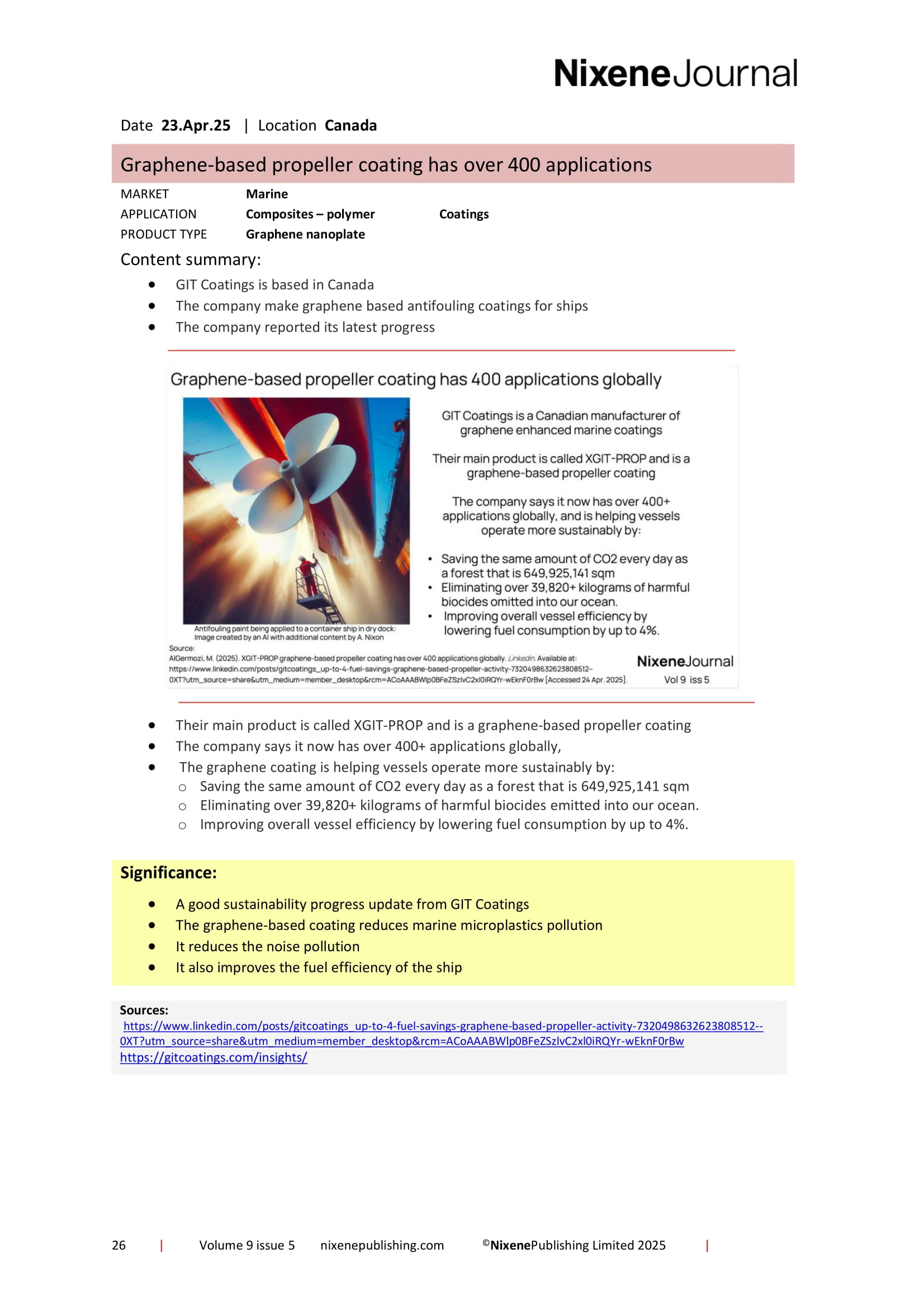Journals
This product is relevant to the following:
Material:
Other:
, ,Locations:
Markets:
Applications:
Product Types:
Technologies:
Related products
-
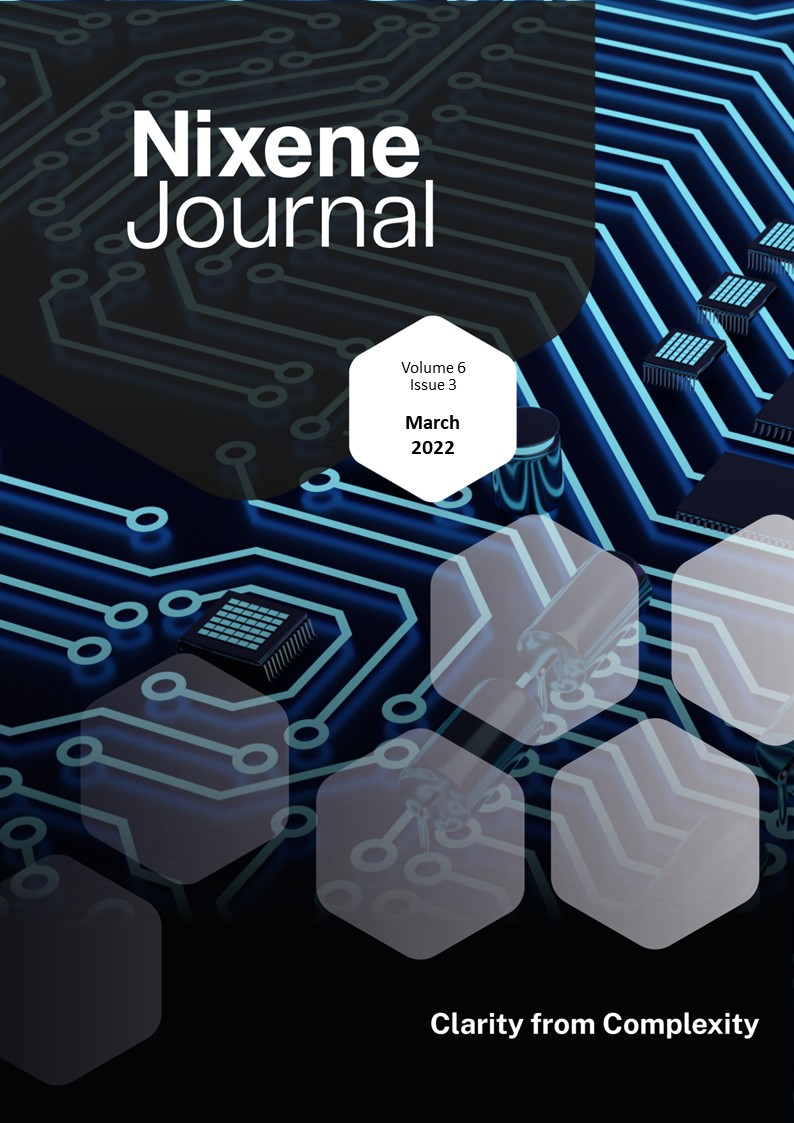
Vol 6 Issue 3
This month Rob and I gained first-hand experience of the benefits of adding graphene to enhance concrete. We were given a tour of the new Mayfield development in Manchester, UK. The site is still under construction, and parts of it are now open to the public. One of these areas is the new mezzanine floor area directly underneath the old Mayfield rail station. We were standing on what seemed to be an unremarkable concrete floor. It becomes remarkable when you know what to look for. We were lucky to have one of the joint MDs Alex McDermott as our guide. The whole floor was constructed and finished in a fraction of the time it would normally take. Also, the floor is flawless, with no expansion joints or cracking. There is also no sign of shrinkage. We knew graphene-enhanced concrete was strong. Now we know there are other benefits emerging. Graphene is the gift that keeps giving. Graphene-enhanced concrete is being trialled in other parts of the world too. In New Zealand, First Graphene has partnered with a particularly active distributor and trial pours are already underway. In the USA, Debbie discovered that the US Army ERDC also has an active interest in graphene enhanced concrete. They are discovering the same strength and fast cure benefits that graphene confers to the finished construction. You can find out more in her special feature. Battery technology continues to be developed. First Graphene and Zentek have both turned their attention to silicon anodes. Silicon is an attractive material to make Li-ion battery electrodes. The problem is it expands by up to 300% when lithium migrates into the crystal structure during charging. Using silicon particles coated with graphene nanoplates seems to mitigate this problem. Transition metal dichalcogenides (TMDs) are another two-dimensional (2D) material. Akanksha Urade wrote a good overview of the technology this month, and separately the Graphene Flagship published an overview of their interest in these materials. They have been working on using TMDs as next generation heat pumps. They can be used in heating and cooling applications and also as thermoelectric generators. This work is still at the early stage, however there are well funded teams working in this research area so we can expect to see meaningful progress in the future. Chemical vapour deposition (CVD) graphene used to be talked about in terms of just a research project. Now we know industrial processes can make graphene films by the kilometre and at high speeds. The development of the technology has matured from academia to industrial R&D. One of the companies in Korea, Charmgraphene has now developed graphene separation and transfer technology to the point where they can make freestanding graphene films at square centimetre scale and in thicknesses ranging from three to ten atomic layers thick. You can read about more of the astonishing progress being made in this field by reading this packed issue. Adrian Nixon, 1st March 2022£45.00 View product -
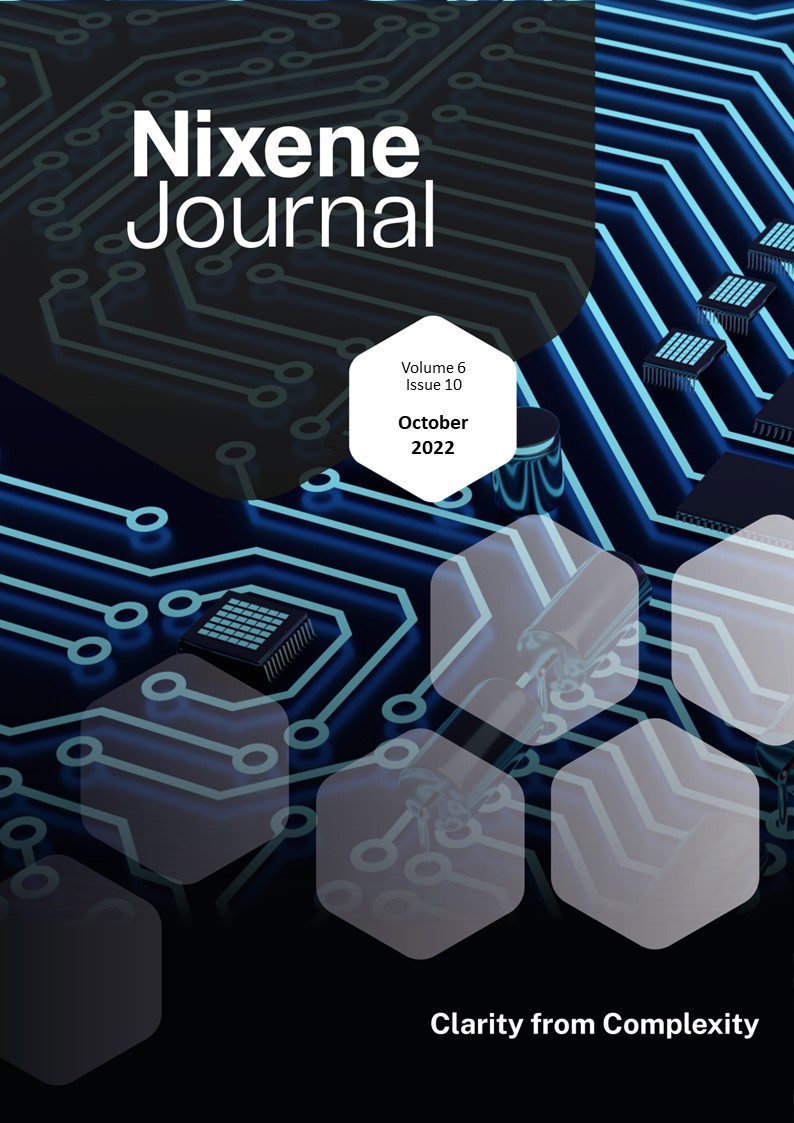
Vol 6 Issue 10
Dear reader, you will know that we are tracking the progress of the biggest graphene companies in the world. Levidian is the biggest on paper with their announced £700 million ($780 m USD) contract with the UAE (vol 6 iss 6 p.26). The other company is Skeleton Technologies who make graphene enhanced supercapacitors for transport systems. They have been making steady progress over the past few years and have now announced a new €220 million ($215 m USD) super factory that will open in Germany in 2024. This will give the company an order of magnitude increase in production capacity (p.32 of this issue). Skeleton have also announced they have been awarded the contract to supply supercapacitors for the latest metro units in the Spanish city of Grenada (p.22). Further industrial progress is being made in the USA. Cardea Bio is a manufacturer of graphene field effect transistor biosensors. Essentially these are lab-on-a-chip devices that will give an instant read out of medical conditions from a sample of body fluids. The company has mastered the art of mass production and its factories can produce up to 20,000 graphene sensors per month. They also report that next year they will have produced their millionth biosensor. This company is shaping up to be a formidable presence in the graphene biosensor market. On the research and technical side, there has been much progress in the quality control of graphene. Terrance Barkan convened a webinar of metrology experts from world class institutions in the UK, USA and South America. The Raman spectroscopy masterclass is well worth viewing if you need to understand how the quality of graphene is measured by this technique and its limitations (p.15). By coincidence this month researchers in India have developed a new technique for reliably measuring the number of layers of graphene in a sample. Rather than use an expensive raman spectrometer, they have found a much cheaper optical microscope can provide similar information (p.17). In the UK, researchers have published a literature review of sustainable fibres for polymer composites. The work clearly shows why sustainable natural fibres are not being adopted to replace synthetic fibres. Natural fibres are an order of magnitude weaker than their synthetic counterparts. There is room for optimism though. The study shows that graphene can enhance the strength of natural fibres in polymer composites and shows there is one primary candidate natural fibre that, with graphene, just might challenge the supremacy of synthetic fibres (p.18). You can find out about this and much more in this fascinating issue. Dear reader, I invite you to read on… Adrian Nixon 1st October 2022£45.00 View product -
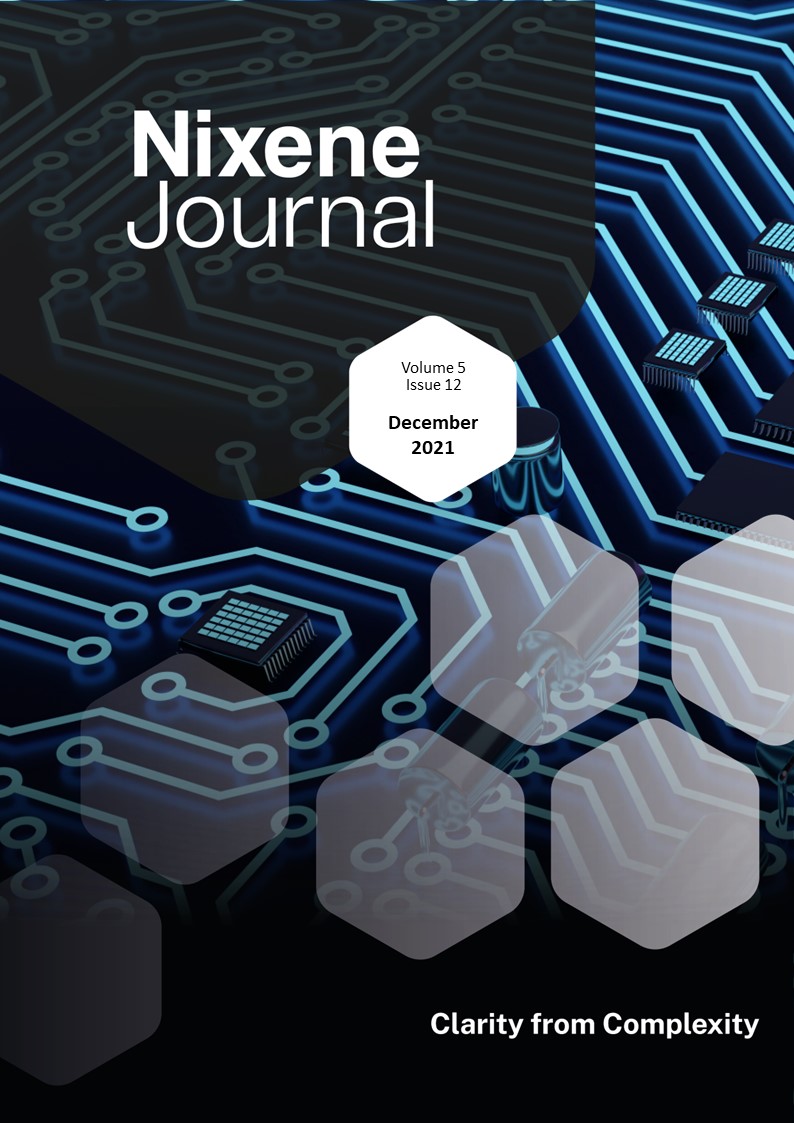
Vol 5 Issue 12
Two new graphene companies have appeared on the radar this month. They both use a similar process to make graphene from methane gas with hydrogen as a by-product. Looking at the patents of the companies they both use a microwave reactor to tear apart the carbon and hydrogen atoms in methane, the carbon atoms recombine as graphene and the hydrogen atoms recombine to form hydrogen gas. There the similarities pause because the two companies have very different approaches for how to market their developments. The first company is Levidian, they are a relaunch of Cambridge Nanosystems from the UK. Their business model is focussed on using waste methane gas from a customer’s process. They use the reactor to lock up the carbon in the methane as graphene and claim carbon capture credits. The graphene production is secondary to this marketing approach. Using disclosures by the company, I was able to create a mass balance for the Levidian method. It appears that the process captures carbon from methane with around 30% efficiency (p.34). Not bad, but still some further progress to make. The second company is California based Lyten who publicly disclosed their activity just a few weeks ago. They were formed in 2015 and have been operating in stealth mode. Their graphene is used to make the electrode for a lithium sulphur (LiS) battery that has three times the energy density of normal lithium-ion batteries (p.35). They have probably decided to come out of stealth mode to raise capital for the scaling up of their process. The company is currently talking with five original equipment manufacturers (OEMs) in the automobile industry. The weakness of LiS batteries has been their capacity fade with repeated charge / discharge cycles. Lyten say they have improved on previous LiS designs so they might have something of interest for manufacturers of electric vehicles. Levidian patented their process in 2014 and Lyten in 2015. Lyten references the Levidian patents in their applications. This is how we know the two processes are very similar. Things could get interesting if one or the other company makes a lot of money in the future. As Elon Musk observed “A patent is like buying a lottery ticket to a lawsuit”. Staying with graphene powder manufacture, we feature John van Leeuwen of Universal Matter in a special feature (p.7). He is leading the drive to scale up the flash graphene process developed by Prof James Tour at Rice University. Universal Matter is definitely a company to watch in the future. All these graphene manufacturing processes are bottom-up, self-assembling graphene atom by atom to create high quality powders. These processes are in their infancy at present. If they can be scaled, they could disrupt the graphene-from-graphite manufacturers in future as they promise controllable quality graphene. This potential market disruption is something we’ll explore in the future, in the meantime there is much more to explore in this issue… Adrian Nixon, 1st December 2021£45.00 View product -
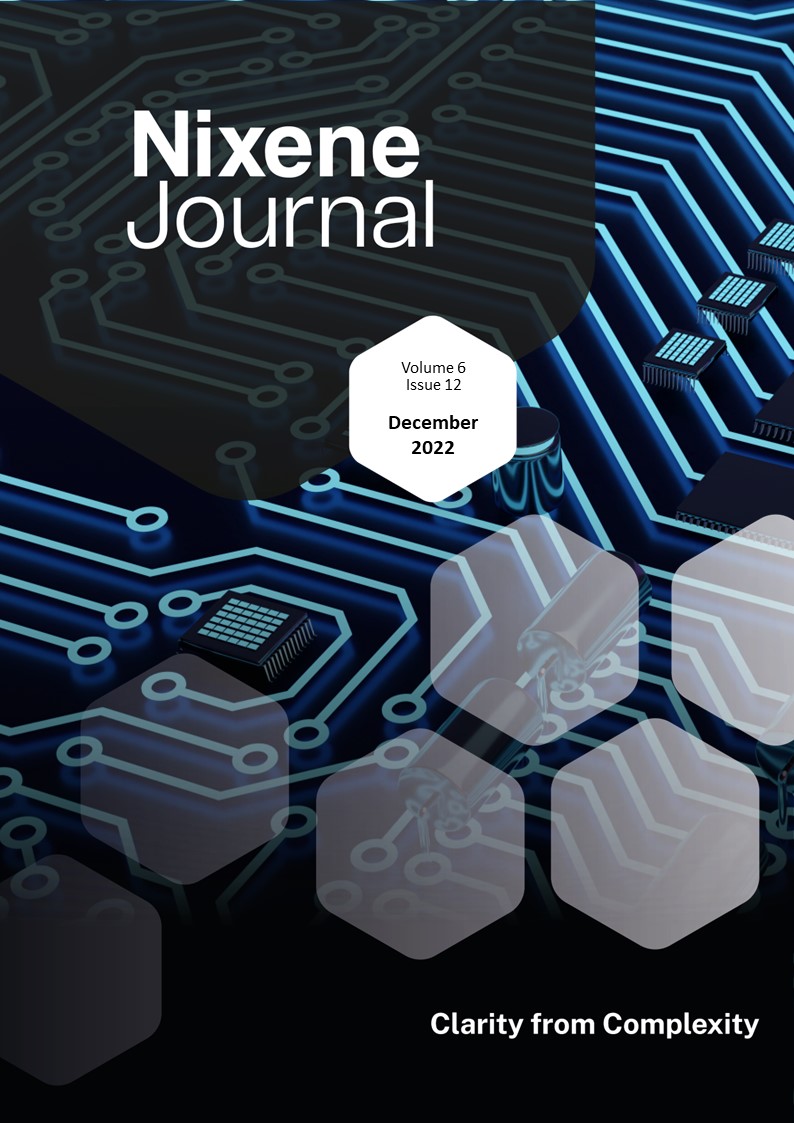
Vol 6 Issue 12
This month Time Magazine named the graphene kitchen styler as one of the best inventions of 2022. This is the graphene cooker we mentioned back in vol 6 iss 2 p.30. The company behind this invention, Graphene Square, announced another product this month, the graphene virtual fireplace radiator. Both devices use large area chemical vapour deposition (CVD) graphene. The virtual fireplace radiator has already won another innovation award and will make its debut at the consumer electronics show in Los Angeles, USA in January 2023. The immediate reaction from people working in the graphene and 2D materials community has been to greet these announcements with a wry smile. My first reaction was to dismiss this as gimmickry as well. Then I thought a little more. You will know, dear reader, that great advances have been made developing manufacturing methods for large area sheet graphene using the CVD technique. Production machines exist in Europe, America, and Asia, some of which can make graphene at speeds of 2m/min and lengths of up to one kilometre (vol 5 iss 8 p.36). A manufacturing business survives by making things and then selling them at a profit. These companies have solved the science and engineering problems to create impressive production capabilities. This is only half of the survival equation. They must develop equally impressive marketing and sales operations to match. In this issue we notice that USA based manufacturer General Graphene is still struggling to find the applications that will be the foundation for the marketing and sales operation. Meanwhile Graphene Square, from South Korea is making cookers and toasters. The reason they are launching apparently trivial products is because they need to educate the market by getting the message out to potential customers that CVD graphene is real, it can be manufactured at scale and integrated into everyday products. This message will not be lost on manufactures in the automotive and aerospace sectors as well as consumer electronics. And consider this, Time Magazine has over three million subscribers, and a wider reach online. Also in this issue, graphene powder manufacturer, Applied Graphene Materials has announced it is in financial trouble. It will run out of cash at the end of January 2023 unless it can find cash from somewhere. The reason for its troubles? A lack of success finding market applications for its graphene that will generate profitable sales. A reminder to us all that developing sophisticated products is only part of the road to success. Making customers aware of the value of your product is key because if you get this right, they will prize your offering as much as you do, and this will lead to profitable sales and a sustainable business. Adrian Nixon 1st December 2022£45.00 View product

